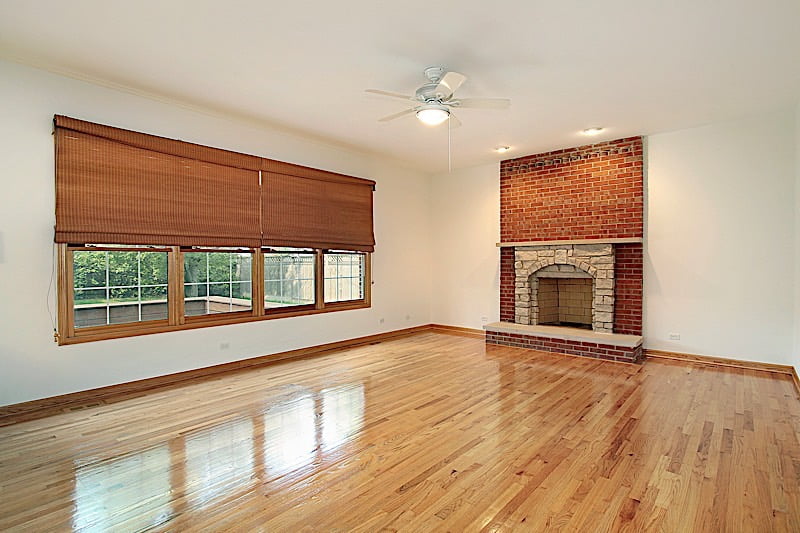Absentee Owner Lists: A Beginner’s Guide
By Than Merrill
Absentee owner leads hare highly sought-after in the real estate investor community.
Not only are vacant homes synonymous with a particularly attractive conversion rate, they are also a lot easier to target in marketing campaigns like direct mail. Meanwhile, the majority of markets across the country have an abundance of vacant homes owned by motivated sellers. With a better idea of who absentee owners are and how to contact them, there’s no reason new investors couldn’t expand their lead generation results, which begs the question: What is an absentee owner? How can investors use these unique leads to their advantage? Continue reading to learn how compiling an absentee owner list could help you down the road.
What Is An Absentee Owner?
An absentee owner is an individual — or perhaps even a business — who owns a real estate asset but elects for it to remain vacant. It is quite common for real estate investors to act as absentee owners out of their own volition. If for nothing else, becoming an absentee owner is one of many viable exit strategies. Having said that, absentee owners aren’t always able to conform to a single definition. While an absentee owner may be an investor who owns a condo in another state, the term could just as easily describe someone who inherits a property. Therefore, absentee owners aren’t defined by how they come to own a real estate asset, but rather by making a conscious decision to let the property sit vacant.
It is worth noting, however, that absentee owners aren’t simply those who have decided to let their own real estate assets go unoccupied; they are something much more: an opportunity. As it turns out, most absentee owners are motivated sellers looking to sell the asset in question, which bodes incredibly well for investors. Homes left to family members in a will, for example, are often viewed as a burden to those who inherit them, and are often better off being sold immediately. Therefore, it stands to reason that investors who know how to find absentee owners may increase their chances of landing their next deal.
[ Wondering how to fund your first investment deal? Click here to register for a FREE real estate class where you will learn how to get started in real estate investing, even with limited funds. ]

How To Build An Absentee Owners List
Building an absentee owners list isn’t nearly as difficult as many new investors make it out to be or assume. After all, the information one needs to identify absentee owners is made public knowledge. Investors simply need to identify properties with tax bills that don’t match their physical location, suggesting the owner is — you guessed it — living somewhere else. In the event the I.R.S. is sending tax bills to a subsequent location, it’s safe to assume the owner isn’t living in the home. Fortunately, there are a number of different places investors may use this information to their advantage, and perhaps even come away with a few more leads:
- Directly from their county, list brokers, municipal websites, and anywhere else with access to local housing information.
- The local tax assessor will have information on where absentee owners may live.
- The internet is full of local and national list providers that will award inquisitive investors with a list of absentee owner names (for a fee, of course).
- Investors may want to consider “driving for dollars,” or simply looking at homes in their very own neighborhood for signs of absentee ownership. Homes with neglected lawn care and maintenance, for example, may suggest nobody is living in the home,
- Browse local rental listings and pay special considerations to prolonged vacancies. Landlords with extended vacancies may be more willing to part ways with their homes if the price is right.
Mailing To An Absentee Homeowner List
In the event investors are able to generate leads from the above outlets, the next thing they should do is initiate a direct mail campaign. That way, they’ll be able to send highly targeted marketing pieces to each and every property. That’s an important distinction to make: understanding the owner’s current position will allow investors to craft a message that is more likely to generate a response. A direct mail campaign targeting an absentee owner mailing list should pay special considerations to the vacant home. Investors should propose a purchase, as to alleviate the homeowner from any unnecessary burdens.
Building Vs. Buying An Absentee Buyer List
Building vs. buying an absentee buyer list comes with the usual caveats. Building their own list will award savvy investors the ability to tailor it to their own needs. In building a list investors can set their own search criteria, which should increase the number of usable leads. However, building a list takes time; time that not everyone may have. Therefore, there’s always the option to buy a pre-established list. To save investors time, a number of list providers have taken it upon themselves to compile local information regarding absentee owners. The lists will come at a price, of course, but they have been known to save a lot of time. That said, investors will get what they pay for. Cheap lists may be found online, but may not result in any leads at all. What’s more, the lists are most likely distributed to several local investors, serving to increase competition. Nonetheless, investors have the choice of building their own list or buying one from a provider.
Benefits Of Building Your Own List
- By building their own list, investors are less likely to face competition from those who purchased massively available lists.
- Building an absentee owner list will allow savvy investors to tailor their search to the properties they are most interested in.
- Investors who build their own absentee owner list won’t have to pay any money for the leads, but they will have to dedicate time to finding them.
- At the very least, compiling an absentee homeowner list on their own will increase investors’ networking opportunities.
- Building a list will allow investors to view absentee homeowners from more than one neighborhood.
Benefits Of Buying An Absentee Owner List
- Buying a list won’t require investors to invest any more of their valuable time seeking out absentee owners.
- Even buying list of absentee property owners will give today’s investors a chance to increase their network.
- Buying a list may result in more absentee owners than building a list.
Summary
Absentee owner leads are an important component of today’s most prolific real estate investor’s marketing strategies. At the very least, an absentee owner mailing list has become synonymous with some of today’s most motivated sellers, which bodes incredibly well for investors. As a result, those who know not only how to find absentee owners, but also get in contact with them, will be able to increase their lead generation strategies almost exponentially.
Key Takeaways
- Absentee owners list real estate leads are some of today’s most dependable leads.
- What is an absentee owner, if not for one more lead investors need to consider pursuing?
- Few leads are more promising to investors than those that come from absentee owners.